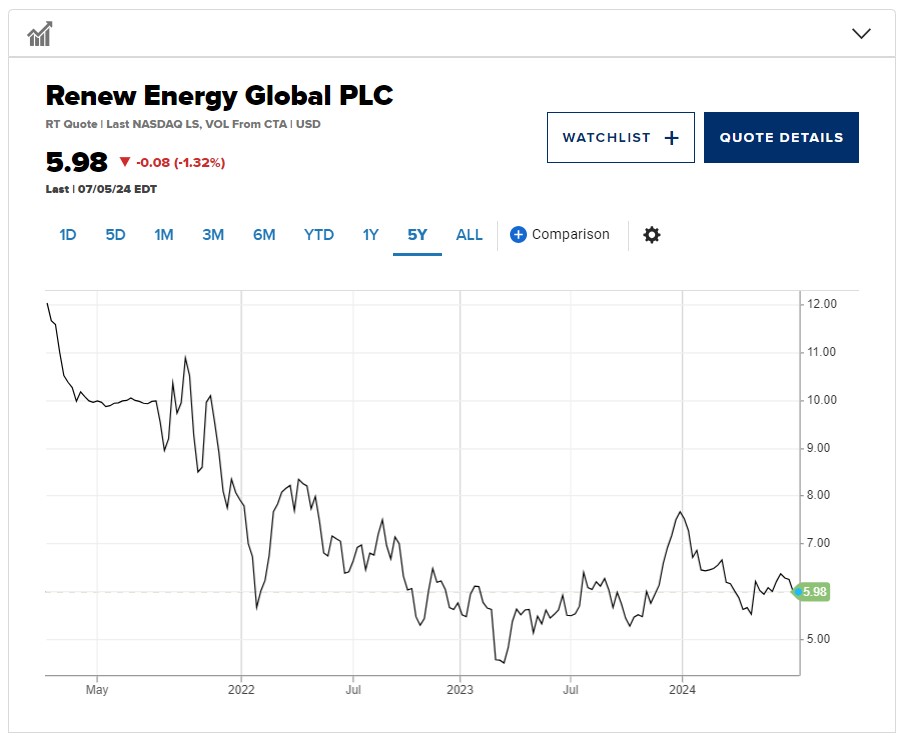20 June 2024
CNBC INSIDE INDIA
Interviews
The big story
Emerging markets have
been on tenterhooks for the better part of this year as the Federal Reserve has
been dangling the prospect of an interest rate cut.
Historically, as U.S. interest rates fall, the
allure of the mighty dollar fades to the benefit
of other currencies.
Yet, any hope of such
relief was dashed last week after forecasts for the first rate cut were pushed
back to September, with a decent chance of a further delay to December.
India Inc might not care this time.
“All of this increase
in interest rates has, in fact, not actually impacted us at all on a business
standpoint,” Sumant Sinha, chief executive of ReNew,
India’s largest clean energy producer and a Nasdaq-listed firm, told CNBC’s
Inside India.
Despite the Reserve
Bank of India hiking rates alongside its global peers, Indian companies have
continued to grow like never before. ReNew, for instance, reported positive
sales momentum in its latest full-year results. Strikingly, it also became
profitable as a public company for the first time.
ReNew appears to be straddling both U.S. and
Indian markets cleverly. The $2.3 billion firm operates entirely out of India,
yet its largest shareholders are U.S. and Canadian institutions. It raises U.S.
dollar-denominated debt, but it’s careful to hedge against any depreciation in
the rupee.

Being savvy has paid off, and lenders have taken notice. Societe
Generale, the French bank, recently agreed to lend it up to $1 billion
in the current market environment over the next three years. That’s on top of
the billions more non-bank financial institutions are offering the company that
currently has the capacity to produce about 10 gigawatts of clean power.
“Over the last 18
months, we’ve actually refinanced almost a billion dollars’ worth of our
international bonds through the rupee market,” Sinha said. “Actually, we’ve
been able to bring down our borrowing costs by almost 60 basis points by having
done some of that.”
It’s not the only one.
Across the country, many businesses and industries continue to grow, as if the
rise in rates doesn’t matter and that current levels are normal.
Indeed, unlike most
developed economies, India’s interest rate regime in 2024 isn’t any different
from that of 2018.

This is in stark contrast to the negative rates that the euro zone
has contended with, or the challenges faced in Japan even today. During the
Covid-19 pandemic, interest rates in India were only as low as 4%.
Yet, the GDP growth of
the world’s fifth-largest economy has only sped up since. Credit ratings agency
Fitch raised its forecast this week and expects India’s economy to grow by 7.2%
this year.
But what if financial
conditions tighten further? Shouldn’t corporate borrowers start to default in a
higher-for-longer scenario?
“We’ve not seen any
episodes of bad loans being formed,” says Rahul Jain, head of India equity
research at Goldman Sachs.
ReNew Energy’s shares
are off 16% this year despite forecasts of a two-fold increase in earnings per
share over the next two years. The stock has sold off alongside others in the
industry that face unique fundamental problems. Meanwhile, the iShares
Global Clean Energy ETF lies in the doldrums while the S&P
500 reaches new highs.
There lies the
disconnect between the economy, the stock market, and a single stock.
While companies are
able to grow and even make a buck when rates are high, their share prices don’t
always reflect that.
Perhaps there’s a case
to be made on whether Wall Street needs a rate cut more than Main Street.
When asked whether
he’s counting down the days to a cut, Sinha said: “Not just counting down, but
waiting very, very eagerly and have been for quite some time.”
Need to know
India and U.S. vow to boost trade ties. National security advisor Jake Sullivan was in the country
this week — the first visit from a high-ranking U.S. official since the
election result. After meeting Modi, the two sides pledged to strengthen
defense and tech cooperation, among other announcements.
Four critical areas Modi can’t ignore with his growth
target. Prime Minister Narendra Modi has an ambitious goal to
make India a developed economy by 2047, a century after its independence from
Britain. CNBC’s Charmaine Jacob highlights four areas that Modi must
focus on if he intends to make it a reality.
Decade-high bond inflows. Foreign
investors will be buying $2 billion worth of Indian government bonds this
month — a decade-high — when they will be included in a widely-tracked JPMorgan
index. More than $200 billion in assets track the benchmark in which allocation
toward India will gradually rise to 10% over the next 10 months.
India records ‘longest’ heatwave. Delhi is facing a severe water crisis as some parts of the
second-most populated city in India soared above 45 degrees Celsius (113
degrees Fahrenheit). CNBC has compiled pictures taken from around the
country as the dry spell is expected to continue over the next four to
five days.
What happened in the markets?
Indian stocks are
making slow progress, but are holding on to their year-to-date gains since the
general election results were revealed. The Nifty 50 index
is heading for a 0.4% gain this week. The index has risen 8.45% this year.
The benchmark
10-year Indian government bond yield has remained relatively subdued, with
the yield falling below the 7% mark and closing in on record lows.






